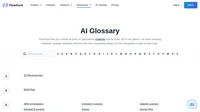A Generative Pre-trained Transformer (GPT) is an AI model that leverages deep learning techniques to produce text that closely mimics human writing. It is based on the transformer architecture, which employs self-attention mechanisms to process and generate text sequences efficiently.
Key Components of GPT
- Generative: The model’s primary function is to generate text based on the input it receives.
- Pre-trained: GPT models are pre-trained on vast datasets, learning the statistical patterns and structures of natural language.
- Transformer: The architecture employs transformers, specifically a neural network model that uses self-attention to process input sequences in parallel.
How Does GPT Work?
GPT models operate in two main phases: pre-training and fine-tuning.
Pre-training
During pre-training, the model is exposed to extensive text data, such as books, articles, and web pages. This phase is crucial as it enables the model to grasp the general nuances and structures of natural language, building a comprehensive understanding that can be applied across various tasks.
Fine-tuning
After pre-training, GPT undergoes fine-tuning on specific tasks. This involves adjusting the model’s weights and adding task-specific output layers to optimize performance for particular applications like language translation, question-answering, or text summarization.
Why is GPT Important?
GPT’s ability to generate coherent, contextually relevant text has revolutionized numerous applications in NLP. Its self-attention mechanisms allow it to understand the context and dependencies within text, making it highly effective for producing longer, logically consistent text sequences.
Applications of GPT
GPT has been successfully applied in various fields, including:
- Content Creation: Generating articles, stories, and marketing copy.
- Chatbots: Creating realistic conversational agents.
- Language Translation: Translating text between languages.
- Question-Answering: Providing accurate answers to user queries.
- Text Summarization: Condensing large documents into concise summaries.
Challenges and Ethical Considerations
Despite its impressive capabilities, GPT is not without its challenges. One significant issue is the potential for bias, as the model learns from data that may contain inherent biases. This can lead to biased or inappropriate text generation, raising ethical concerns.
Mitigating Bias
Researchers are actively exploring methods to reduce bias in GPT models, such as using diverse training data and modifying the model’s architecture to account for biases explicitly. These efforts are essential to ensure that GPT can be used responsibly and ethically.
Further Reading
- What is GPT AI? – AWS
- Generative pre-trained transformer – Wikipedia
- Generative Pre-Trained Transformer (GPT) definition | Encord
- What are Generative Pre-trained Transformers (GPTs)? | Medium
Natural Language Processing (NLP)
Explore how Natural Language Processing (NLP) bridges human-computer interaction. Discover its key aspects, workings, and applications today!



